If your little one battles with tummy troubles and has been diagnosed with IBS (Irritable Bowel Syndrome), a common concern is whether chickpeas, a staple in many child-friendly low FODMAP foods, are safe for their sensitive bellies.
So let’s dig into the world of FODMAPs and uncover the truth about everyone’s favourite legume: chickpeas!
Whether spread generously on bloat-free bread or used as a luscious dip for vibrant sliced vegetables, this delectable creation has captivated taste buds worldwide.
Well, fear not, dear parents, for we’re about to embark on an informative journey to shed light on this important question.
Let’s explore the tasty world of chickpeas and learn how to adapt it so it’s the perfect, gut-friendly food for children without triggering tummy troubles.
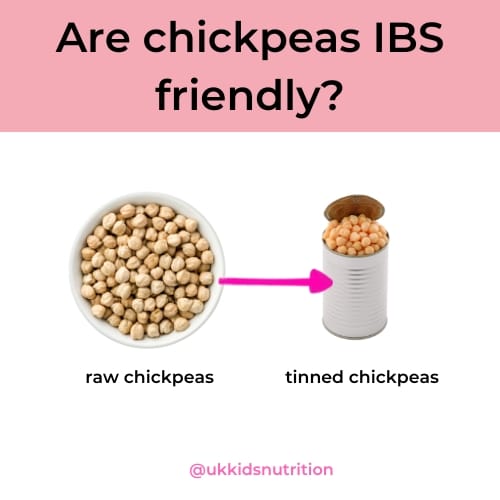
Are chickpeas a low FODMAP food?
When it comes to our IBS kids, it’s crucial to understand whether these legumes are friends or foes to their delicate digestive systems.
But first things first, let’s tackle the FODMAP puzzle.
FODMAP stands for Fermentable Oligosaccharides, Disaccharides, Monosaccharides, and Polyols.
It’s a fancy way of describing a group of carbohydrates that can trigger discomfort in individuals with IBS.
These sneaky carbs resist digestion in the stomach and find their way to the large intestine, where they can cause mischief.
But what about chickpeas? Are they high in FODMAPs?
Well, I have some news for you. Chickpeas, unfortunately, don’t fall into the low FODMAP category and are a high FODMAP food.
They contain certain carbohydrates that can spell trouble for sensitive tummies.
However, don’t despair just yet! There’s still room for your child to enjoy these delightful legumes.
The key lies in moderation and portion control.
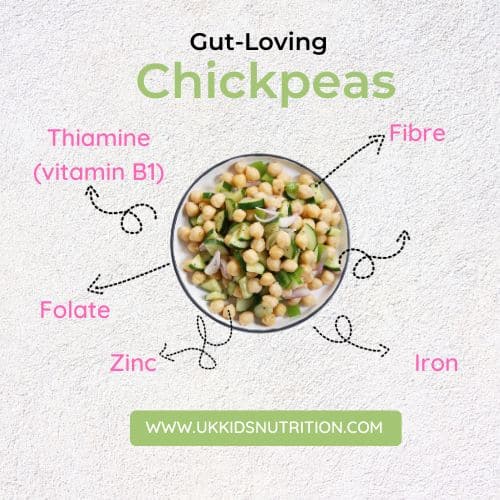
Are chickpeas IBS friendly?
According to the analysis conducted by the experts at Monash University, a low FODMAP serving of chickpeas is around 1/4 cup or roughly 42 grams.
So, your child can still savour the goodness of chickpeas by keeping an eye on the portion size.
Now, before you start worrying about their hummus cravings or missing out on those tasty chickpea snacks, remember that everyone’s tolerance to FODMAPs varies.
Some children with IBS may find they can enjoy chickpeas without any issues.
Others may need to limit their intake (based on their tolerance).
As always, it’s essential to pay attention to your child’s unique needs and listen to their body.
If chickpeas seem to trigger discomfort or exacerbate symptoms, speak to a registered paediatric dietitian specialising in IBS and FODMAPs.
My Happy Belly Club gives you personalised guidance and shows you how to create a suitable meal plan for your child.
In the end, the journey to finding the right balance for your child’s tummy is all about understanding and making informed choices.
With a bit of creativity and some expert advice, you can still create delicious meals that cater to your child’s needs.
So, dear parents, let’s embark on this FODMAP adventure together and discover the best path to a happier, healthier tummy for our IBS kids.
Remember, knowledge is power, and armed with the right information, we can navigate the world of FODMAPs with confidence and ease.
Are chickpeas low or high FODMAP?
Regrettably, chickpeas are not a low FODMAP food.
This means they are not the best choice for the typical FODMAP diet for children experiencing an IBS flare (if chickpeas are a known trigger food for them).
While some children with IBS may be able to handle a few chickpeas without issues, others might need to limit them during the elimination phase.
Consulting with a healthcare professional or registered dietitian who specialises in IBS and FODMAPs can provide personalised guidance to determine the best approach for your child.
Why are canned chickpeas low FODMAP?
Here’s some good news for you.
While fresh chickpeas may not be suitable for sensitive tummies, their canned counterparts, known for lower FODMAP content, come to the rescue.
These magical canned chickpeas undergo a special process that works its charm on FODMAPs.
The canning process does not make low FODMAP chickpeas.
However it helps reduce the FODMAP content by allowing the oligosaccharides from inside the chickpeas to leach into the water.
This makes a measured amount of tinned chickpeas a low FODMAP food.
So, whether you’re planning to whip up a velvety hummus or add some protein-packed goodness to your child’s low FODMAP meal plans, you can reach for those tummy-friendly tinned chickpeas with confidence.
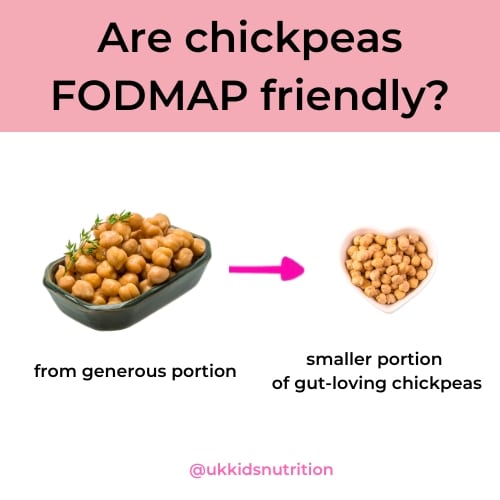
Can I soak the chickpeas overnight to lower FODMAP?
The idea of soaking dry chickpeas overnight to lower their FODMAP content may have crossed your mind.
While it may seem like a viable solution, the truth is a bit more nuanced.
Soaking dry chickpeas alone doesn’t have a significant impact on reducing their FODMAP levels.
However, there is a way to lower the FODMAP content through the cooking process.
Oligosaccharides, the FODMAP component in chickpeas, are water-soluble.
Cooking methods like boiling or canning can help reduce the overall level of FODMAPs in chickpeas.
If you prefer to prepare your chickpeas, soaking chickpeas for digestion can be helpful.
You can soak them overnight and then boil them.
Remember to discard the water that the chickpeas were boiled in, as it contains some of the FODMAP components.
This helps children be able to enjoy a bigger serving size of this gut-loving food.
However, it’s important to note that this process can be time-consuming, especially for busy parents.
If you’re looking for convenient low FODMAP options for your child with IBS, it’s best to opt for canned or tinned chickpeas.
There’s virtually not a lot of difference in price as tinned products are budget-friendly.
They have already undergone the necessary processing to reduce their FODMAP content, making them a more practical choice for your family’s needs.
Is hummus low FODMAP?
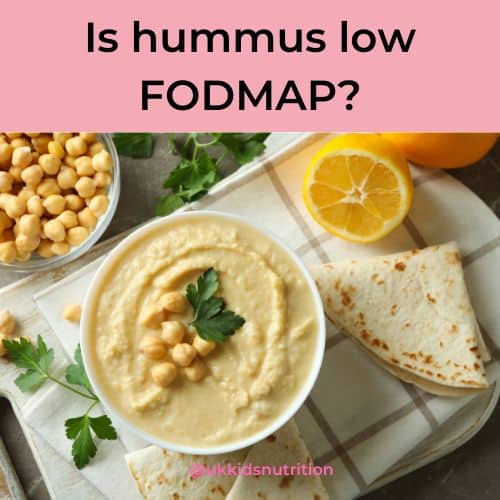
If your child with IBS happens to be a hummus lover, you may be wondering if this creamy and flavorful dip is low FODMAP.
Let’s explore the world of hummus and FODMAPs to find the answer.
Unfortunately, traditional hummus recipes often include ingredients like chickpeas and garlic, both of which are high in FODMAPs and can trigger digestive discomfort.
However, don’t lose hope just yet!
There are low FODMAP alternatives available that can satisfy your child’s hummus cravings without causing tummy troubles.
While finding specifically labelled low FODMAP hummus varieties may be challenging, you can create your version using FODMAP-friendly ingredients.
Get creative in the kitchen using ingredients like olive oil, chives and black pepper and enjoy the delightful flavours of hummus.
These ingredients are all suitable for a low FODMAP diet whilst keeping your child’s tummy happy.
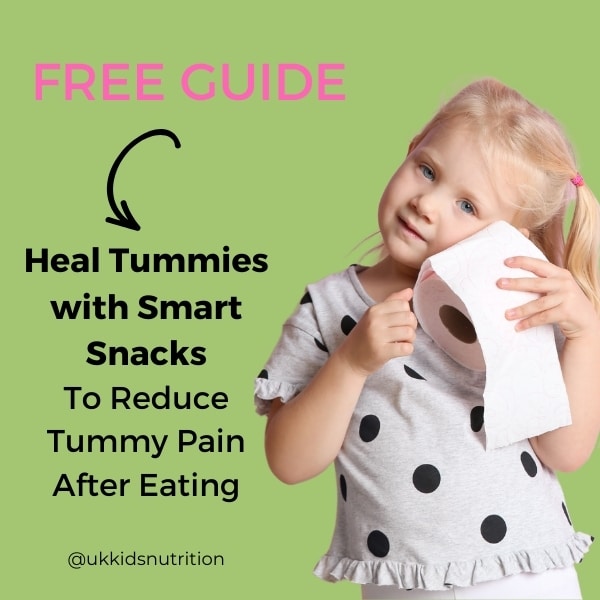
Are Roasted Chickpeas Low FODMAP?
Roasted chickpeas have become a popular choice for those seeking a crunchy and flavourful snack.
However, when it comes to their FODMAP content, the roasting process doesn’t have a significant impact.
The carbohydrates that can cause digestive discomfort remain present even after roasting.
As a result, individuals with sensitive digestive systems, including children with IBS, should approach roasted chickpeas with caution.
If following a low FODMAP diet trial, it’s advisable to explore alternative snack options that are low in FODMAPs for a more tummy-friendly experience.
Practical low FODMAP choices for busy families
If you’re exploring creative culinary options, I recommend searching for ‘low FODMAP recipe’ online.
Here you’ll find a treasure trove of delightful, gut-friendly dishes that are perfect for children with sensitive tummies.
Is chickpea flour low FODMAP?
If you’re considering using chickpea flour in your cooking and have concerns about its FODMAP content, here’s what you need to know.
Chickpea flour, often used in gluten-free chickpea options, is not low FODMAP as it contains high amounts of oligosaccharides.
These can trigger digestive symptoms in individuals with FODMAP sensitivities.
It’s recommended to choose foods with alternative flours, such as rice flour or oat flour, to ensure a low FODMAP diet for those with IBS.
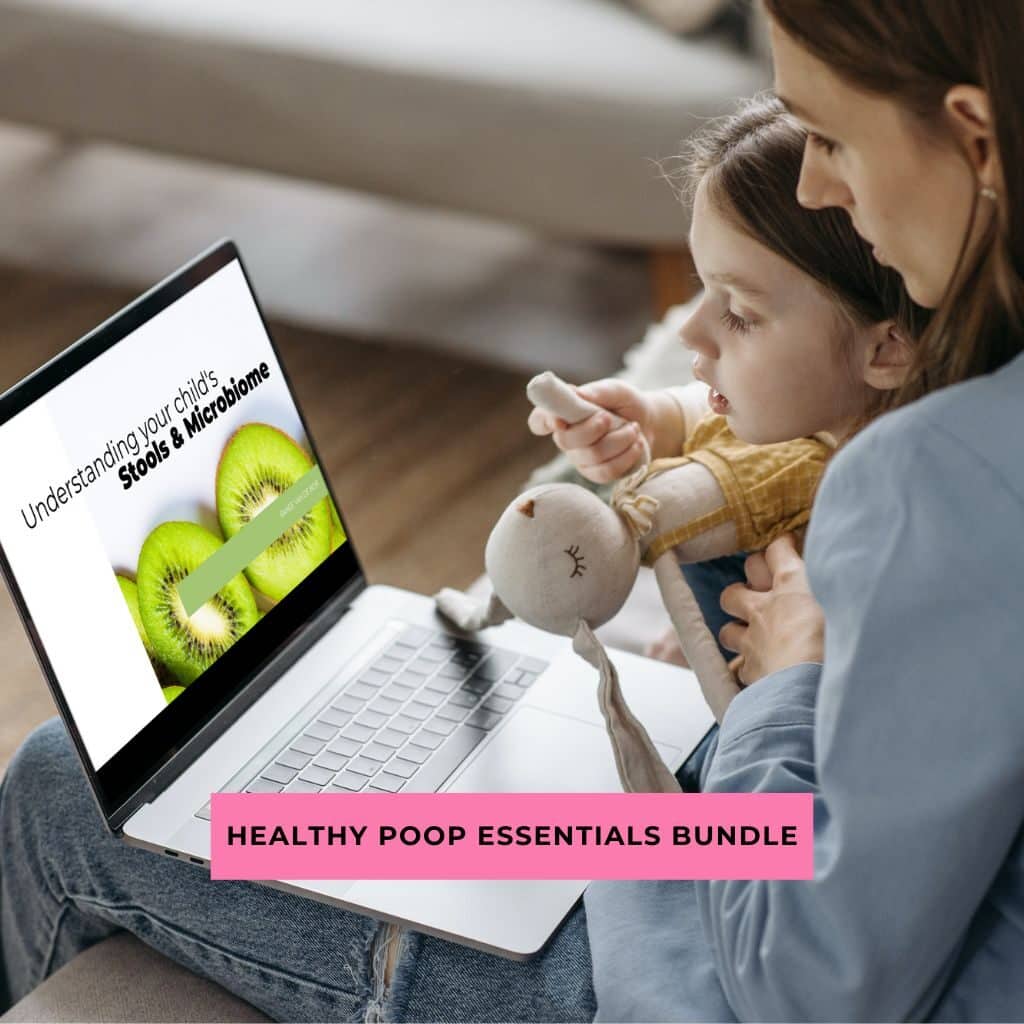
Is falafel low FODMAP?
If your child with IBS loves falafel, you might be curious about its FODMAP content.
Here’s what you need to know as a parent.
Traditional falafel, made with chickpeas and flavourful herbs and spices, can be high in FODMAPs and potentially trigger diarrhoea or a painful tummy.
However, there are alternatives available, such as falafel made with alternative beans.
Sweet potato can be another lower FODMAP filling and can be a safer choice for your child.
So, you can still treat your little one to the joy of falafel without worrying about tummy troubles.
Is chickpea pasta low FODMAP?
As a parent of a child with IBS, you may wonder if chickpea pasta is a suitable option for their sensitive tummy.
The answer is, it depends and at what stage your child is on their FODMAP journey.
Most chickpea pasta is made from chickpea flour, which is typically high in FODMAPs.
The good news is that there are now low FODMAP varieties available in the market.
These specially formulated options use a combination of low FODMAP ingredients, making them a safer choice for individuals with IBS.
So, if you’re considering chickpea pasta for your child, make sure that you are aware of your child’s food triggers.
This way you won’t need to avoid any high FODMAP foods unnecessarily.
Remember, just because a food isn’t IBS-friendly does not mean that it isn’t a gut-loving food.
More good news is that chickpeas are naturally gluten free and dairy free.
This means they can be safely included in your weekly meal planning when you are clear about your child’s unique trigger foods.

Bottomline
Navigating FODMAPs in daily diet can be challenging and the FODMAP content of chickpeas can vary depending on the portion sizes consumed.
This article should now answer your question: are chickpeas low FODMAP?
Generally, chickpeas are not considered low FODMAP, according to Monash University’s analysis.
However, as they are highly nutritious, their intake should be limited during IBS flares or when trying to understand your child’s food triggers.
It’s crucial to work with a registered dietitian specialising in irritable bowel syndrome in children to navigate your child’s unique dietary needs.
Consider exploring the IBS Kids Mastery Method in my Happy Belly Club, a programme designed to help identify triggers and improve your child’s IBS symptoms.
Let Me Help
Is your child struggling with constipation, bloating/tummy pain or loose stools?
Then my proven Happy Belly Formula will help.
- 1-2-1 Happy Belly Club (Gut Health Programme)
- Or book a discovery call to learn more about the programme
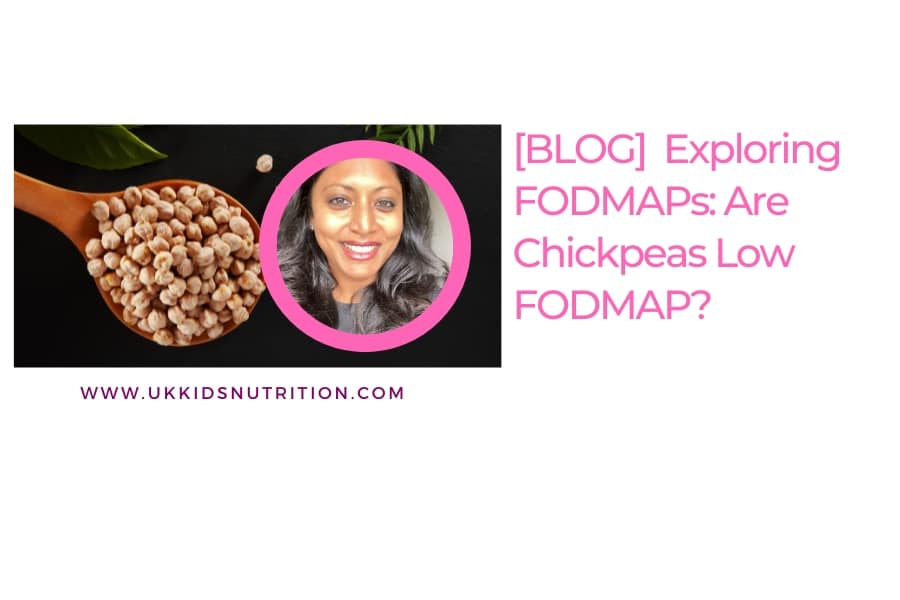
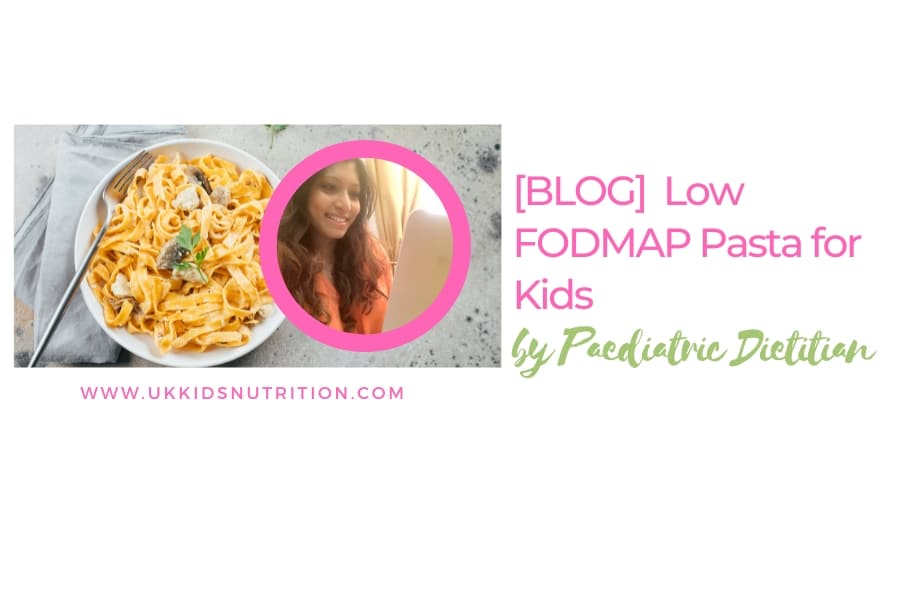
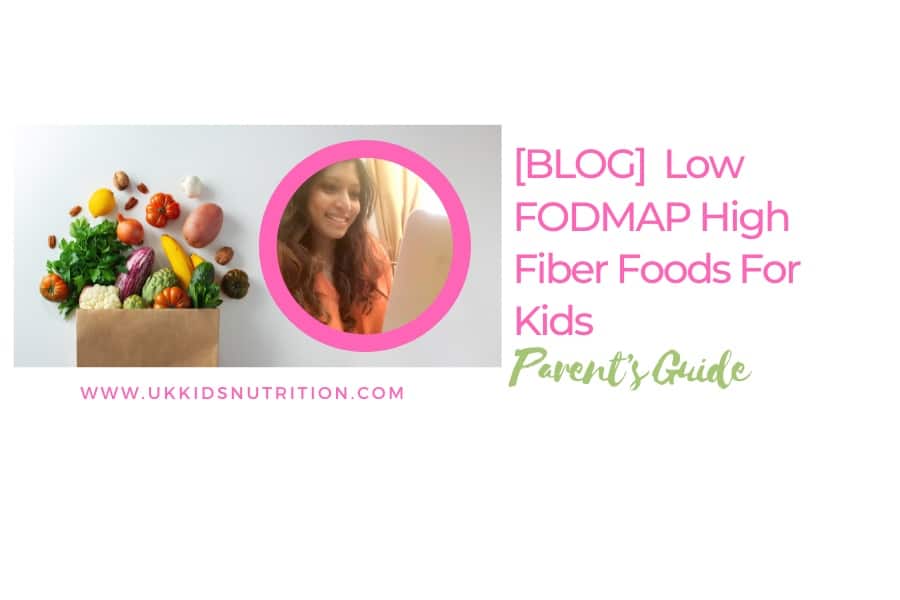
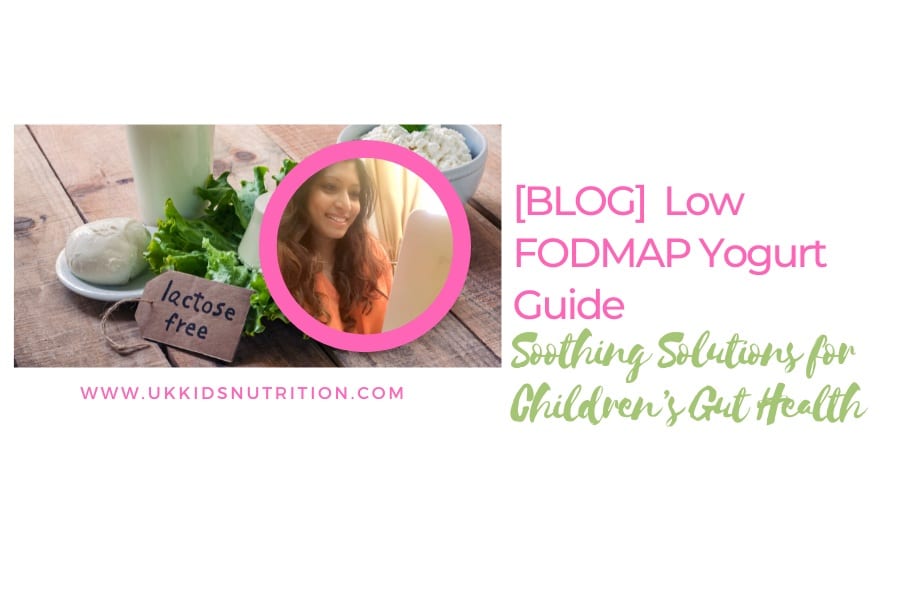
One thought on “Are chickpeas low FODMAP?”
Hmm… yes, what a minefield! Thank you for all your input and work, Bahee.
I did come across the idea that aged garlic (aka black garlic) is low fodmap… and therefore could be used to make hummus. What are your thoughts?